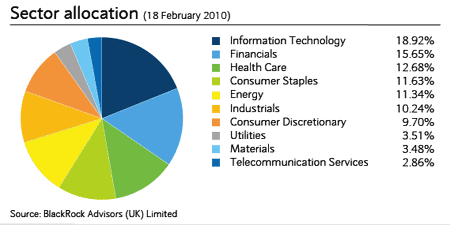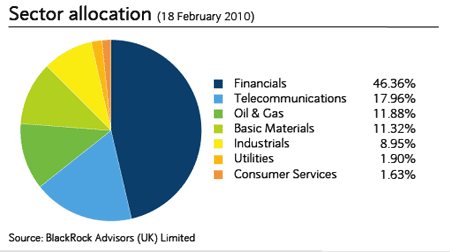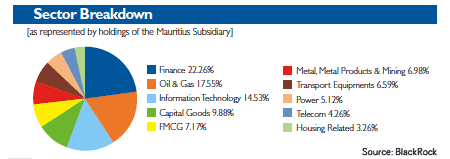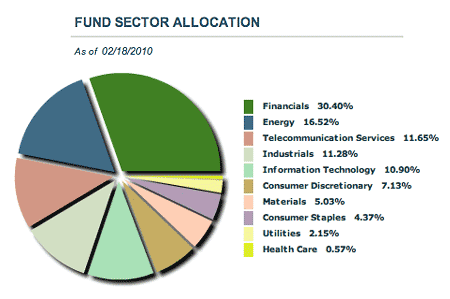Be wary when buying emerging market ETFs
Low-cost exchange-traded funds have been a huge boon for investors wanting to get into emerging markets. But many don't come up to scratch, and you should be careful about what you're buying. Here, Cris Sholto Heaton looks at some of the weaknesses of emerging market ETFs, and how to avoid the poorer offerings.

The arrival of low-cost exchange-traded funds (ETFs) has been great for investors, particularly in developed markets. However, as I've noted before, many emerging market ETFs don't come up to scratch.
I can't do a full Asian ETF review there are just too many out there (300-odd at my last count). And what's suitable for one investor may not be right for another. However, I do keep a list of what's available, which I'm currently updating with the latest launches. I'll include a link to this in my next article.
Meanwhile, this week, I want to look in general at some of the weaknesses of many EM ETFs, which should help you to avoid some of the poorer quality funds out there
MoneyWeek
Subscribe to MoneyWeek today and get your first six magazine issues absolutely FREE

Sign up to Money Morning
Don't miss the latest investment and personal finances news, market analysis, plus money-saving tips with our free twice-daily newsletter
Don't miss the latest investment and personal finances news, market analysis, plus money-saving tips with our free twice-daily newsletter
ETFs are great for investing in developed markets
If you buy a fund which tracks a large developed market index such as the S&P 500 or the FTSE 100, you get a reasonably well-balanced portfolio of shares across a wide range of sectors, as the chart below (for the S&P 500) shows.
Sector allocation for the iShares S&P 500 ETF

On top of that, there are few state- or family-owned companies. Cross-holdings between different firms are also limited. And in most cases, there will be a wide base of shareholders, with no one person or group in control. Management is supposed to be professional and committed to increasing shareholder value as their top priority.
Sure, this last point sometimes breaks down. The management may try to boost the share price in the short term to increase the value of their stock options at the expense of the company's long-term prospects. Or they may embark on a value-destroying takeover spree. But in principle, these firms are supposed to be run for all their shareholders.
Emerging market ETFs aren't always well balanced
In emerging markets, it can be a different story. Let's take a look at the most popular index for China ETFs the FTSE/Xinhua 25. As you can see below, this is concentrated in a handful of sectors such as financials, telecoms and natural resources. It's not a well-balanced portfolio.
Sector allocation for the iShares FTSE/Xinhua 25 ETF

Why? Well, in emerging markets, firms in these industries tend to be the largest around. So when you're compiling an index, it ends up being heavily weighted towards them. In China's case, the giant state-owned firms that dominate these industries have a scale that no other Chinese firm can manage.
If we look at the stocks that make up this index, we see that almost all of them are ultimately government-controlled. Worse still, there aren't many companies here I'd want to buy for my portfolio. This again is different to the S&P 500 or FTSE 100, which contain a large number of high quality stocks.
Components of the FTSE/Xinhua 25 index
table.ben-table table { border: 1px solid #2b1083;font: verdana, arial, sans-serif; }
th { background: #2b1083; padding: 2px 1px;color: white;font-weight: bold;text-align: center;border-left: 1px solid #a6a6c9; font-size: .8em;}th.first { border-left: 0; padding: 2px 1px;text-align: left; font-size: .8em;}
tr {background: #fff;}
tr.alt {background: #f6f5f9; }
td { padding: 2px 1px;text-align: center;border-left: 1px solid #a6a6c9;color: #000;vertical-align: center; font-size: .8em;}td.alt { background-color: #f6f5f9; }
td.bold { font-weight: bold;}
th.date { font-size: .7em;}td.first { text-align: left; }
td.left { text-align: left; }td.bleft{ text-align: left; font-weight: bold; }
| China Mobile | 10% |
| China Construction Bank | 9% |
| Industrial & Commercial Bank of China | 8% |
| China Life Insurance | 7% |
| Bank of China | 6% |
| Bank of Communications | 4% |
| China Citic Bank | 4% |
| China Merchants Bank | 4% |
| China Petroleum & Chemical Group (Sinopec) | 4% |
| China Shenhua Energy | 4% |
| China Telecom | 4% |
| China Unicom | 4% |
| CNOOC | 4% |
| PetroChina | 4% |
| Ping An Insurance Group | 4% |
| BYD | 3% |
| China Coal Energy | 3% |
| Air China | 2% |
| Aluminium Corporation of China (Chalco) | 2% |
| China Communications Construction | 2% |
| China COSCO Holdings | 2% |
| China Railway Group | 2% |
| Zijin Mining Group | 2% |
| Datang International Power Generation | 1% |
| Huaneng Power International | 1% |
This isn't just a problem with China. Let's take a look at India (below). The Sensex is better balanced in terms of sectors. But we're still not getting much exposure to key themes such as the emerging market consumer just 7% is in fast-moving consumer goods (FMCG).
Sector allocation for the iShares BSE Sensex ETF

And listed companies in India aren't run like most developed market firms. Most are controlled by family-owned groups. For example, the Tata Group has four separate listed divisions in the 30-stock Sensex.
Components of the Sensex
| Reliance Industries | 13% | Mukesh Ambani |
| Infosys | 10% | None (several founders) |
| ICICI Bank | 8% | None (Life Insurance Corp largest shareholder) |
| Larsen & Toubro | 7% | None (Life Insurance Corp largest shareholder) |
| ITC | 6% | None (British American Tobacco largest shareholder) |
| HDFC | 5% | None (Citigroup largest shareholder) |
| HDFC Bank | 5% | HDFC |
| State Bank of India | 4% | State |
| ONGC | 4% | State |
| Tata Consultancy Services | 3% | Tata Group |
| Bharat Heavy Electricals | 3% | State |
| Bharti Airtel | 3% | Sunil Bharti Mittal |
| Tata Steel | 3% | Tata Group |
| Sterlite Industries | 2% | Anil Agarwal |
| Hindustan Unilever | 2% | Unilever |
| NTPC | 2% | State |
| Mahindra & Mahindra | 2% | Mahindra Group |
| Tata Power | 2% | Tata Group |
| Hindalco Industries | 2% | Aditya Birla Group |
| Tata Motors | 2% | Tata Group |
| Maruti Suzuki | 2% | Suzuki |
| Wipro | 2% | Azim Premji |
| Grasim | 2% | Aditya Birla Group |
| Hero Honda | 1% | Honda and Munjal family |
| Reliance Infrastructure | 1% | Anil Ambani |
| Sun Pharmaceutical | 1% | Dilip Sanghvi |
| DLF | 1% | Kushal Pal Singh |
| Reliance Communications | 1% | Anil Ambani |
| ACC | 1% | Holcim and Ambuja Cements |
Family-owned firms have their good points. If the company's managers are also the controlling shareholders and most of the family wealth is tied up in the firm, then they may be more inclined to take a long-term view of the business's prospects.
But a controlling shareholder can also work against the interests of minority shareholders. By using a complex corporate structure with many listed and unlisted subsidiaries, an individual or family can have complete control, despite owning a small minority of overall shares.
By shuffling assets or setting up joint ventures, they can enrich themselves at the expense of the rest of the shareholders. Many Southeast Asian tycoons have an appalling track record in this respect. And their groups often make up a significant chunk of the index.
Some emerging market ETFs are more diverse than others
So there are two potential problems with investing in emerging market ETFs. First, the companies may be poor quality. Second, you might not get access to the sectors you're really interested in, such as the emerging market consumer.
So what should you do? The ideal solution is to invest in emerging markets through a well-chosen portfolio of stocks, rather than through ETFs. That way you can alter the weightings and avoid poorer quality companies. But many investors prefer to use ETFs for simplicity and cost. If you do this, you'll have to compromise to some extent, but you can avoid some of the worst traps by being selective.
Expert tips & advice for investing in Asia! Claim your FREE guides from MoneyWeek that include:
- How to go about investing to Asia
- Which brokers to use to buy foreign shares
All good ETF providers have a breakdown of the sectors and stocks that the fund invests in on their website. So it's easy to find out exactly what it's tracking before you buy it.
For example, if you just want to trade a short-term move in the Chinese market, a FTSE/Xinhua 25 tracker may well be suitable. After all, this index contains the big, high-profile Chinese stocks that will draw in most of the money when investors want to pile into China. A tracker from a big provider such as iShares, Lyxor or DB x-trackers will be relatively low-cost, liquid and have tight bid/offer spreads.
But on a very long-term view, better options may be available in the US or Hong Kong. For example, consider the SPDR S&P China. This invests in a much wider basket of stocks, including large state-owned firms and smaller ones listed in Hong Kong, the US and Singapore. As you can see below, it's still quite heavily invested in financials and energy. But there's a bit more diversity to the portfolio, with a combined 11% weighting in consumer sectors.
Sector allocation for the SPDR S&P China ETF

Other alternatives include the Claymore/Alphashares China Small Cap, which is another Hong Kong, US and Singapore-listed fund. Or the PowerShares Golden Dragon Halter USX, which invests only in US-listed stocks.
Both take the financials exposure down even further (12% and 7% respectively). The Claymore fund has minimal energy exposure as well. Most recently, new niche provider Global X has launched a number of Chinese sector ETFs, which track Hong Kong-listed stocks, including a consumer-themed one.
Always do your research before you buy
This sort of choice is relatively new for Asia ETFs. It's largely confined to China so far. Sometimes you'll find an interesting niche product in another area. As I mentioned last week, there are the iShares Far East Smallcap and Emerging Markets Smallcap funds. These have a much higher weighting in consumer sectors. Small caps are likely to be far more volatile, but they may also be innovative entrepreneurial firms that can grow into future heavyweights.
In a few cases, the regular index is better than you might expect. For example, the sole Indonesia ETF available so far, the Van Eck Market Vectors Indonesia, has around 23% in consumer stocks. While the country has some problems with the quality of its companies, the portfolio looks reasonably good.
At the other extreme, any MSCI Taiwan tracker available from a number of providers - will be very tech heavy at around 60% of the portfolio. This is inevitably a very cyclical index, but to an extent that reflects the make-up of the Taiwanese economy. And on the positive side, this includes plenty of high quality firms, including some that are slowly building an international image, just as many Japanese and Korean manufacturers have before.
Others indices are more mixed. For example, the MSCI Malaysia index is reasonably well-balanced in terms of sectors, but there are certainly plenty of weak companies in the Malaysian market. But Malaysia is a potentially interesting market if economic reforms continue and an MSCI Malaysia ETF is one of the easiest ways to invest. It's not ideal, but I think it's worth the trade-off.
However, there are emerging market ETFs I wouldn't touch regardless of how much I liked the underlying country story. The worst offenders are generally not in Asia. One example would be any Turkey tracker. With around 60% in financials, a benchmark like this does not reflect any developing manufacturing economy well.
Overall, for those willing to shop around, the emerging markets ETF choice is becoming better. But there's a lot more room for improvement. Hopefully, we might see sector ETFs for major markets such as India and broad-based thematic ETFs based on themes such as EM consumers coming out in the future.
In the meantime, you have to be careful what you're putting your money into. Just as you shouldn't buy a managed fund without looking at the manager's track record, neither should you buy an ETF on the strength of its name, without checking exactly what it invests in.
This article is from MoneyWeek Asia, a FREE weekly email of investment ideas and news every Monday from MoneyWeek magazine, covering the world's fastest-developing and most exciting region. Sign up to MoneyWeek Asia here
Get the latest financial news, insights and expert analysis from our award-winning MoneyWeek team, to help you understand what really matters when it comes to your finances.
Cris Sholto Heaton is an investment analyst and writer who has been contributing to MoneyWeek since 2006 and was managing editor of the magazine between 2016 and 2018. He is especially interested in international investing, believing many investors still focus too much on their home markets and that it pays to take advantage of all the opportunities the world offers. He often writes about Asian equities, international income and global asset allocation.
Cris began his career in financial services consultancy at PwC and Lane Clark & Peacock, before an abrupt change of direction into oil, gas and energy at Petroleum Economist and Platts and subsequently into investment research and writing. In addition to his articles for MoneyWeek, he also works with a number of asset managers, consultancies and financial information providers.
He holds the Chartered Financial Analyst designation and the Investment Management Certificate, as well as degrees in finance and mathematics. He has also studied acting, film-making and photography, and strongly suspects that an awareness of what makes a compelling story is just as important for understanding markets as any amount of qualifications.
-
 What are my retirement income options?
What are my retirement income options?We’re all told to save into a pension, but there’s widespread confusion about how to take an income from our savings and investments at retirement, a new study has found. We look at your retirement income options.
-
 UK interest rates: will the Bank of England lower rates?
UK interest rates: will the Bank of England lower rates?The Bank of England’s Monetary Policy Committee’s (MPC) final interest rates meeting of the year takes place tomorrow (18 December) and most experts expect a cut
